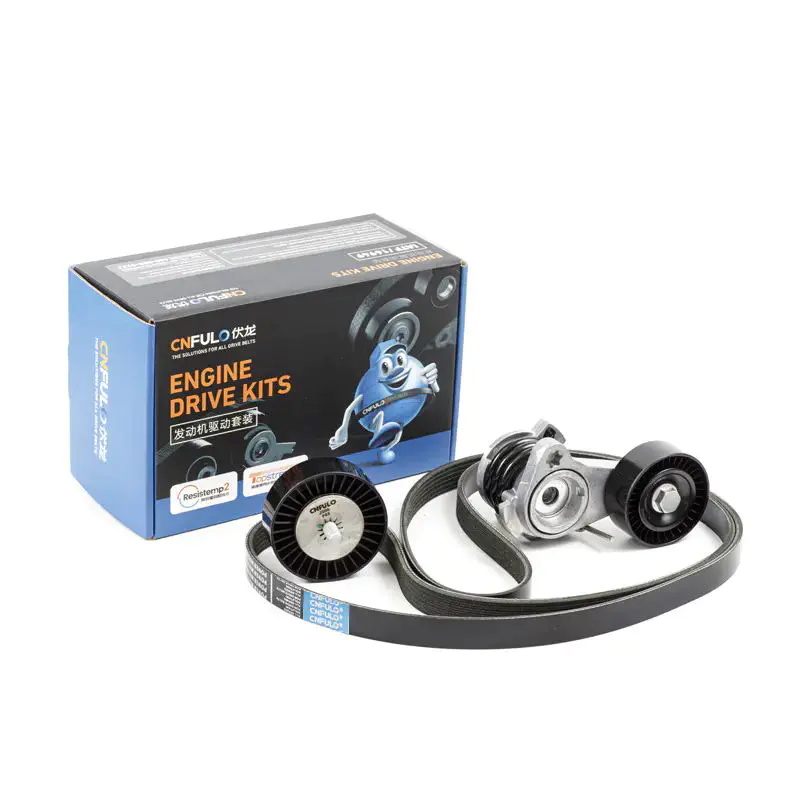Summary:Determining if the timing belt kit needs replacement is crucial for preventing engine damage. Here are some warning signs to look out for:
High Mileage: The timing belt is a critical component with a finite lifespan, often measured in miles. Exceedin......
Determining if the timing belt kit needs replacement is crucial for preventing engine damage. Here are some warning signs to look out for:
High Mileage: The timing belt is a critical component with a finite lifespan, often measured in miles. Exceeding the recommended mileage for timing belt replacement poses a significant risk. The belt undergoes constant stress, and as it ages, the rubber can deteriorate, leading to increased chances of snapping or causing damage to the engine components. Regularly checking the mileage against the manufacturer's recommendations is essential for proactive maintenance.
Age of the Belt: The materials comprising a timing belt degrade over time due to a combination of factors, including heat, exposure to contaminants, and mechanical stress. Even if the mileage is within the recommended range, an aging timing belt may show signs of wear. Brittle rubber and diminished tensile strength can result in catastrophic failure. Therefore, considering the age of the belt, especially in older vehicles, is crucial to preempt potential issues.
Visible Wear: Conducting a meticulous visual inspection involves examining every inch of the timing belt for visible wear indicators. Cracks in the rubber, fraying along the edges, or any missing teeth on the belt are indicative of severe wear. Each of these issues can compromise the belt's structural integrity, leading to erratic engine timing, increased noise, and, if left unaddressed, eventual failure. Swift action is necessary when wear is evident.
Tensioner Issues: The timing belt tensioner ensures that the belt is under the proper tension, preventing slack or excessive tightness. A malfunctioning tensioner can disrupt this balance, leading to irregularities in belt movement. Squeaking or rattling noises emanating from the timing belt area are potential signs of tensioner problems. Timely identification and rectification of tensioner issues are imperative to prevent premature wear and failure of the timing belt.
Engine Misfires: The timing belt synchronizes the rotation of the crankshaft and camshaft, playing a pivotal role in engine operation. A deteriorating timing belt can cause misalignment between these components, resulting in engine misfires. This manifests as rough idling, decreased performance, and potential stalling. Addressing timing belt issues promptly is critical to restoring proper engine timing and functionality.
Visible Oil Leaks: Oil leaks in the vicinity of the timing belt can have detrimental effects. Oil exposure can degrade the rubber composition of the belt, leading to softening, swelling, and reduced tensile strength. Detecting oil leaks early, along with thorough inspection and replacement of the timing belt, is essential to prevent oil-induced damage and ensure optimal engine performance.
Engine Overheating: The water pump, integral to the timing belt kit, circulates coolant to regulate engine temperature. A failing water pump due to a worn timing belt can result in inadequate cooling, leading to engine overheating. Monitoring the engine temperature and promptly addressing any anomalies, such as overheating, is crucial to prevent severe damage to engine components.
Dashboard Warning Light: Some vehicles are equipped with advanced diagnostics that can trigger a dashboard warning light in the event of timing belt or engine-related issues. When this warning light illuminates, it signifies the need for immediate attention. Consulting the vehicle's manual and seeking professional diagnostics are imperative to identify and address the specific nature of the problem.
Timing Kit
